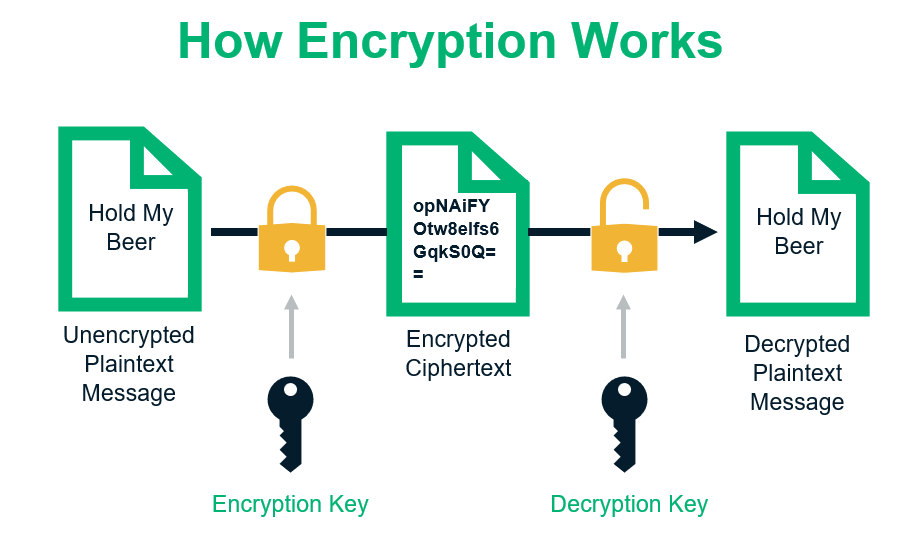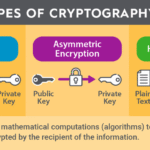Have you ever looked at your favorite locks and thought, “How secure is this really?” In the world of cryptography, encryption keys are the proverbial locks that safeguard our digital data. But like any lock, its effectiveness is measured not merely by its complexity but also by how well it is stored. So, how can one store an encryption key securely without risking a leak? This question unveils a myriad of considerations, particularly in an age beset by security breaches and data theft.
To embark on this exploration, we must first understand the fundamental nature of encryption keys. An encryption key is a string of characters that needs to be kept confidential to secure data integrity and confidentiality. Exposure of this key could lead to unauthorized access, loss of data confidentiality, and potentially ruinous consequences for individuals and organizations alike. This concern goes beyond mere negligence; it poses an active risk that requires strategic solutions.
Choosing the right environment for key storage is critically important. There are primarily two paradigms for secure key storage: software-based storage solutions and hardware-based storage solutions. Software-based solutions, such as password managers, are often user-friendly and convenient. However, they can represent a significant vulnerability point, especially if not adequately secured. They are susceptible to malware that can infiltrate systems and retrieve sensitive data.
On the other hand, hardware-based solutions, such as Hardware Security Modules (HSMs) and USB key devices, provide a significantly enhanced level of security. HSMs are dedicated appliances designed to manage digital keys securely. They offer the benefit of physical isolation from the main system, reducing potential attack vectors. Using a standalone device to store encryption keys allows for robust physical security controls that software solutions cannot match. However, this approach can be costly and may introduce logistical challenges in deployment and use.
Regardless of the storage medium selected, a central tenet must always be adhered to: the principle of least privilege. Access to the encryption key should be explicitly restricted to only those individuals and systems that absolutely require it. Authentication measures, such as multi-factor authentication (MFA), must be employed to fortify access control. The need for stringent access controls elevates the challenge of managing keys across teams and applications. It necessitates a balance between usability and security, often a difficult equilibrium to maintain.
The lifecycle of an encryption key is another crucial consideration in secure storage practices. From generation and distribution to eventual retirement, every phase must incorporate secure practices. Key generation should utilize a robust algorithm, ideally using a hardware random number generator to mitigate predictability risks. When distributing keys to authorized users, it’s paramount to employ secure channels, such as encrypted emails or secure messaging apps, to avoid interception.
Equally important is the periodic rotation of encryption keys. Stale keys can create vulnerabilities; hence, implementing a policy for regular key rotation is essential. This practice mitigates the risk if a key becomes compromised, ensuring that even if a threat actor gains access, the window of opportunity is limited. Develop a clear protocol for decommissioning outdated keys, ensuring they are rendered irretrievable and preventing any residual data exposure.
Let us also discuss key extraction and backup strategies, which are vital for resilient cybersecurity planning. Merely storing a key is insufficient; it must also be retrievable in case of data loss or corruption. Encrypting the keys themselves can add an additional layer of security. Store the encrypted keys in a secure vault, with access controlled and monitored. If an organization employs cloud services, ensure it utilizes a trusted provider that adheres to rigorous security standards. However, even cloud environments warrant caution—keys should not be stored alongside the encrypted data in the same environment. This separation ensures that a breach in one area does not lead to automatic access to the other.
Furthermore, training and awareness among personnel play an indispensable role in maintaining secure key storage practices. Organizations should invest in security training programs that emphasize the importance of encryption keys and their secure management. Employees must understand the common pitfalls that could lead to key compromise, fostering a culture of security mindfulness.
As the cybersecurity landscape evolves, so too must the strategies we employ. Implementing techniques such as key splitting, whereby a single key is divided into multiple parts insecure means, can add complexity and increase protection against unauthorized access. Additionally, the integration of blockchain technology for key management is emerging as an innovative solution, leveraging its immutable ledgers to enhance traceability and security.
In conclusion, just as one would take great care in safeguarding a physical key to an important lock, so too must we extend such diligence to encryption keys. The commitment to robust security practices around key storage is paramount to maintaining the sanctity of digital information. With evolving threats and increasing sophistication of potential attackers, prioritizing secure encryption key storage is not only prudent but essential for safeguarding our digital future.









Leave a Comment